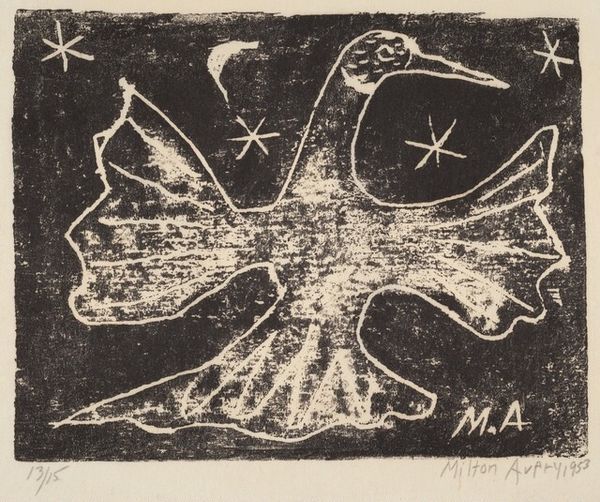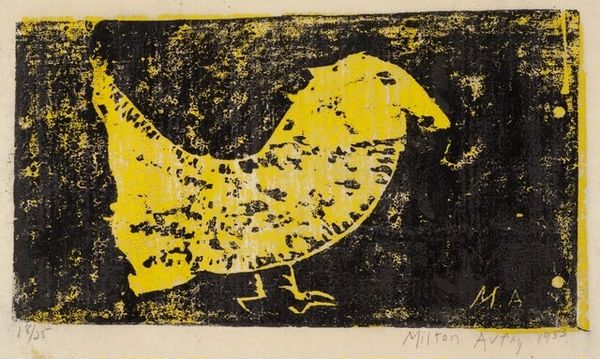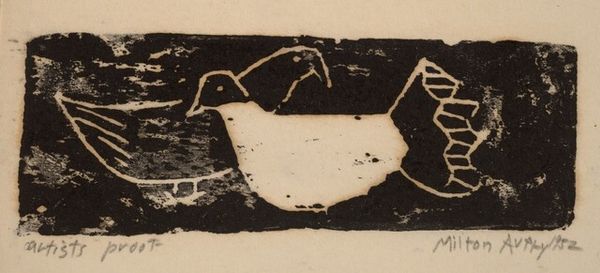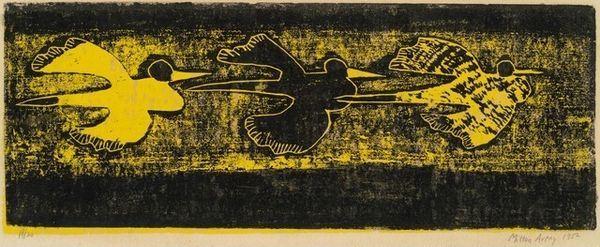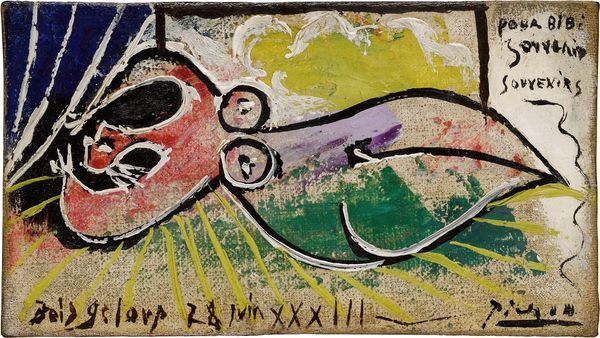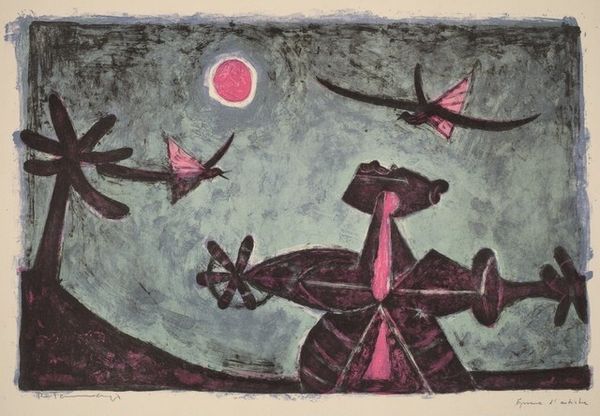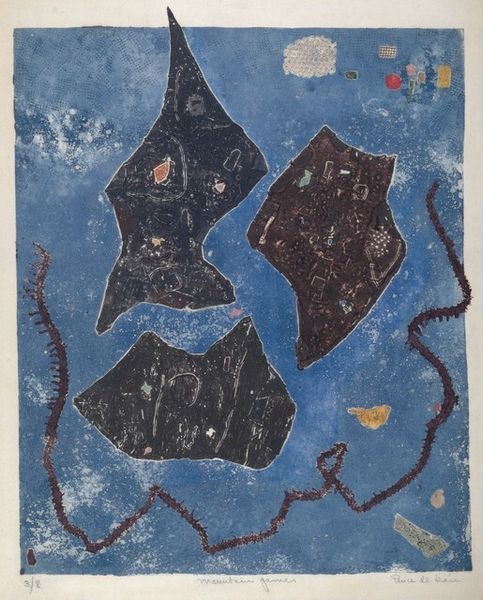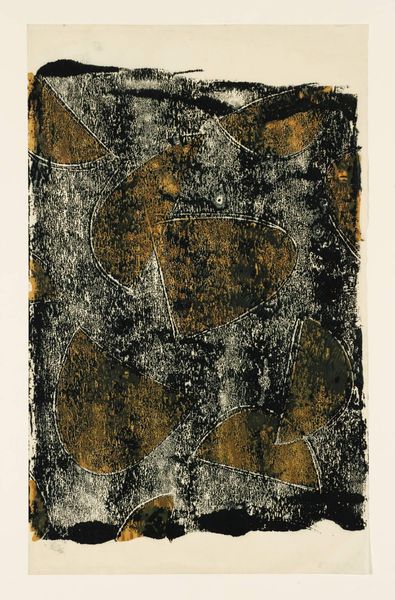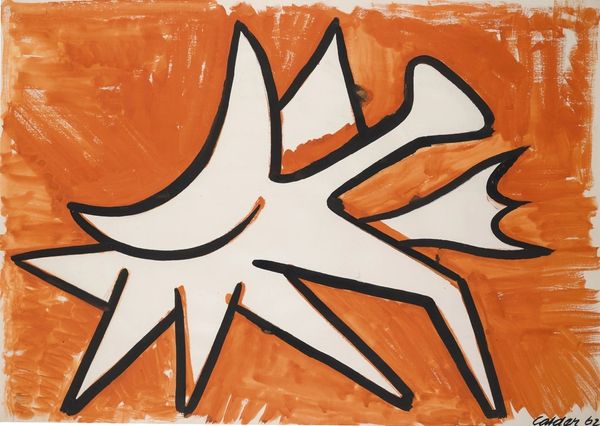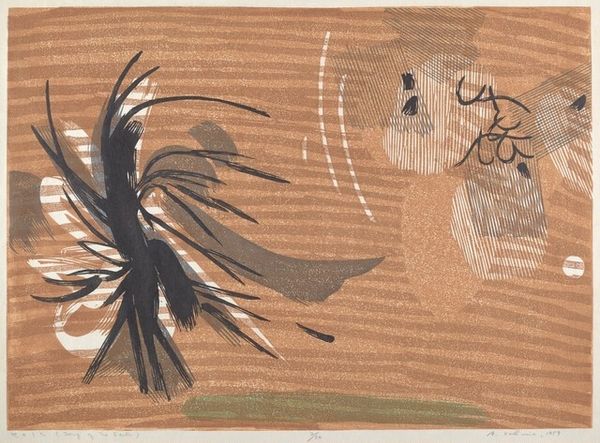
print, woodcut
#
abstract-expressionism
# print
#
landscape
#
figuration
#
woodcut
#
line
#
modernism
#
watercolor
Dimensions: image: 18.2 x 22.8 cm (7 3/16 x 9 in.) sheet: 25.5 x 30.9 cm (10 1/16 x 12 3/16 in.)
Copyright: National Gallery of Art: CC0 1.0
Curator: Here we have Milton Avery's "Dawn," a woodcut print from 1952. It’s quite striking, isn’t it? Editor: It certainly is. That central figure, a radiant bird against a dusky sky, evokes a rather dreamlike quality. The limited palette and almost crude execution of the stars also really catch my eye. Curator: Let's delve into the means of its creation. Being a woodcut, this image was born from labor. The artist carefully carved into a wood block. That textured quality we see on the yellow figure is a direct result of the grain. Avery created an “artist proof," meaning this print represents a crucial part of his production. Editor: True, but let's not overlook the formal structure, too. Note how the artist balances the figure of the bird with geometric stars and a slim crescent moon. Avery utilizes the dark space as contrast against the vivid yellow form. What could appear primitive is actually a deliberate balancing act. Curator: That balance also relates to the printmaking industry itself. Remember, woodcuts were common forms of accessible illustration, making them part of a much larger cultural landscape of reproduction. Was Avery commenting on this widespread form through this work, or was it meant for the few? Editor: Semiotics, of course, comes into play here. Avery uses simplified symbolic language. The bird suggests freedom or perhaps a soul taking flight. Stars could represent aspirations. It’s open to interpretation, yet firmly rooted in symbolic tradition. Curator: But where does the wood for that block come from? What were the environmental costs of creating this piece in the mid-20th century? We must not ignore these social factors. The materials have stories, too. Editor: Ultimately, Avery brings a kind of starkness to this composition. Regardless of my interest in its underlying significance or the bird’s form, what speaks volumes is this image's emotional directness. It is a beautiful symbol that, even today, we all relate to. Curator: I think it also challenges this artificial hierarchy in the art world. Printmaking like this deserves attention not just for what it depicts, but how it comes into being. The process is fundamental. Editor: Perhaps. Regardless, after taking in "Dawn," one is left with the lasting impression of a symbol rendered with grace and profound feeling, leaving so much open for contemplation.
Comments
No comments
Be the first to comment and join the conversation on the ultimate creative platform.
